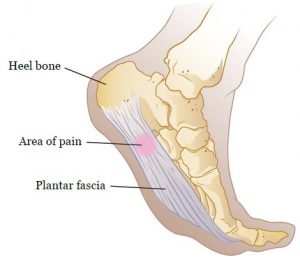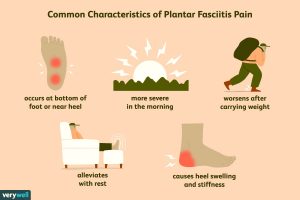Plantar fasciitis or fasciopathy

Running
September 8, 2019
Smartphone Injuries: When Technology Physically Hurts
September 22, 2019Plantar fasciitis or fasciopathy

- achilles tendons
- acupuncture
- calcaneus
- calf muscle
- chiropractor
- dry needling
- fasciopathy
- feet
- fibrous band
- flat feet
- foot
- heel bone
- heel pain
- heel spur
- inflammation
- kinesiologist
- ligament
- manual therapy
- nerve
- obese
- obesity
- Osteopath
- overweight
- pain
- physiotherapist
- plantar fascia
- Plantar fasciitis
- pregnancy
- recovery
- runner
- shock wave therapy
- soft tissue
- sports therapist
- strength
- stretching
- taping
- therapist
- toes
- treatment

 Plantar fasciitis or fasciopathy (PF) is one of the most common causes of heel pain. It involves an irritation/inflammation and sometimes small tears of a fibrous band of tissue, called plantar fascia, which connects the heel bone to the toes.
Plantar fasciitis or fasciopathy (PF) is one of the most common causes of heel pain. It involves an irritation/inflammation and sometimes small tears of a fibrous band of tissue, called plantar fascia, which connects the heel bone to the toes.
Common symptoms of plantar fasciopathy is stabbing pain that usually occurs with your first steps in the morning. As you get up and move more, the pain normally decreases, but it might return after long periods of standing or after rising from sitting.
Plantar fasciopathy is more common in runners. In addition, people who are overweight and those who wear shoes with inadequate support have an increased risk to get PF.
Plantar fasciopathy usually resolves within 6 to 18 months without treatment. With the correct and consistent treatment, it can resolve a lot faster and usually 97% of the people with PF will recover in less than 6 months.
What causes it?
Active men and women between the ages of 40 and 70 are at the highest risk for developing plantar fasciopathy. It’s also slightly more common in women than men. As mentioned above, you are at a greater risk of developing PF if you’re overweight or obese. This is due to the increased pressure on your plantar fascia ligaments, especially if you have sudden weight gain. Likewise, women who are pregnant often experience bouts of PF, particularly during late pregnancy.
If you’re a long-distance runner, you may be more likely to develop plantar fascia problems. You’re also at risk if you have a very active job that involves being on your feet often or for long, such as working in a factory or being a restaurant server.
If you have structural foot problems, such as very high arches or very flat feet, you may develop PF. Tight Achilles tendons, which are the tendons attaching your calf muscles to your heels, may also result in plantar fascia pain. Simply wearing shoes with soft soles and poor arch support can also result in plantar fasciopathy.
In the past, doctors believed that heel pain was the result of heel spurs. A heel spur is a hook of bone that can form on the heel bone, or calcaneus, of the foot. According to the American Association of Orthopedic Surgeons (AAOS), 1 in 10 people has a heel spur, but only 1 in 20 people with heel spurs experiences pain. 
How is plantar fasciopathy diagnosed?
Your medical clinician should be able to tell if you have it just by collecting information regarding the onset of the symptoms and by performing a physical examination and more specifically by checking for tender areas in your foot. Imaging tests are rarely required but in a very few cases an X-ray, US or MRI may be requested to rule out another cause, like a compressed nerve or a stress fracture in your heel.
How can I get it fixed?
The therapist will decide the treatment plan but it will most likely consist of some activity or sport modification) in order to reduce the irritation in the area (e.g. swimming or cycling instead of running), manual therapy which will consist of a combination of soft tissue mobilization/ release and joint mobilizations to reduce muscle tension and pain, stretching and strengthening exercises for the calf muscles but also the small muscles on the sole of the foot. Finally, dry needling/acupuncture and taping may be used as adjuncts to help in the reduction of muscle tension and pain respectively. The doctor may prescribe some anti-inflammatories and painkillers in the early stages to control the pain levels. Extracorporeal shock wave therapy could also help. In this therapy, sound waves bombard your heel to stimulate healing within the ligament. Surgery and injections are rarely needed.
Worried about pain in the heel?
Come see us at Diversified Integrated Sports Clinic so we can guide you back to being pain free.
Katerina R.
[ad_2]


